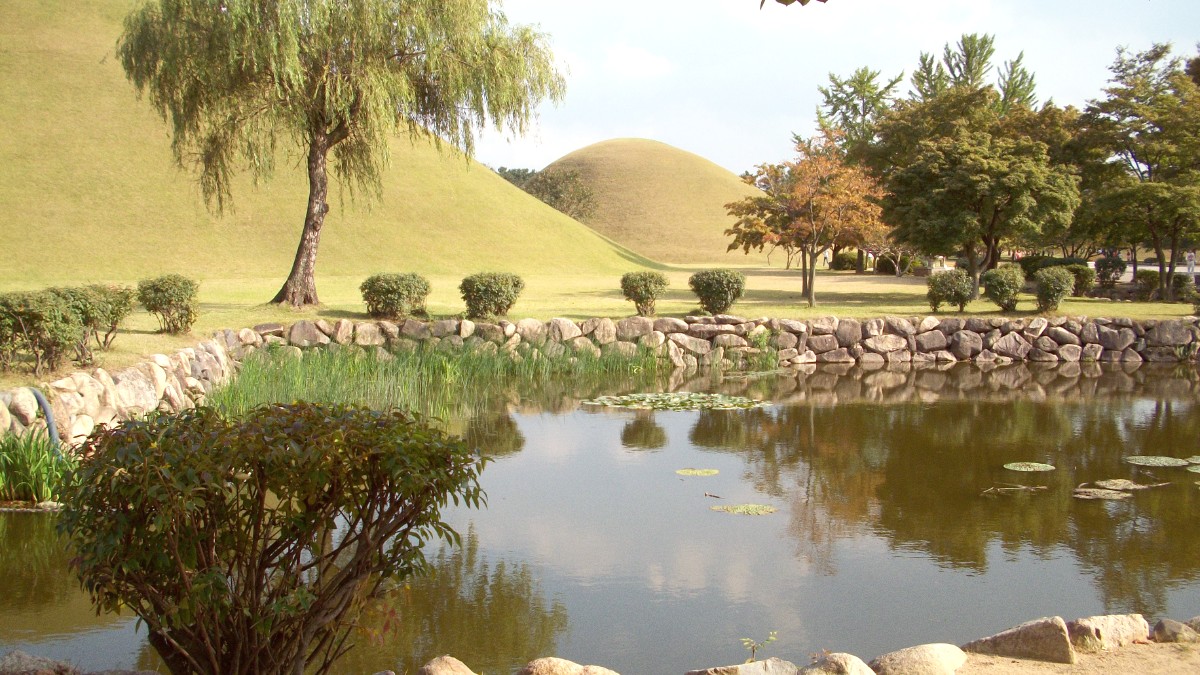
Gyeongsangbuk Do, South Korea
Rice (bap), noodles (myeon), and tofu (dubu) form the base of many meals. Kimchi, various leafy greens, mushrooms, and root vegetables are common. Pork, beef, chicken, and seafood are widely consumed.
Korean food is savory, often spicy, and rich in umami. Common flavor enhancers include garlic, ginger, gochujang (chili paste), doenjang (fermented bean paste), soy sauce, and sesame oil.
Many dishes are designed for sharing, especially main courses and side dishes (banchan). Sharing food from communal plates is customary.
Use chopsticks for solid food and a spoon for rice and soup. Never stick chopsticks upright in your rice; this resembles offerings for the dead.
Wait for the eldest person at the table to start eating before you begin. This shows respect.
Gyeongju's most famous specialty. Small, round bread with thin crust and sweet red bean paste filling. Find it at dedicated shops like Hwangnam-ppang.
A required try when in Gyeongju.
A traditional clear rice wine (cheongju) brewed in Gyeongju. It has a long history and offers a subtle, refined taste.
Found at traditional liquor shops or some restaurants.
A hearty meal of rice and various side dishes, wrapped in large, fresh leafy vegetables (ssam). Many traditional Korean restaurants specialize in this dish.
A fresh and interactive dining experience.
Soju (소주): A clear distilled spirit, Korea's most popular alcoholic drink. Makgeolli (막걸리): Milky, fizzy rice wine, served in a bowl. Sikhye (식혜): Sweet rice punch, served cold as dessert. Bokbunja-ju (복분자주): Korean raspberry wine.
Hwangnam-ppang: Red bean paste bread. Gyeongju Gyori Gyeranppang (경주교리김밥): Gimbap famous for thin egg omelet strips.
Dedicated "fine dining" restaurants are limited compared to Seoul. Upscale restaurants are often within luxury hotels and resorts in the Bomun Lake area.
Mid-range restaurants are abundant, especially downtown and Hwangnidan-gil street. They offer a wide variety of Korean dishes.
Traditional Markets, Bunsik-jip, and Gukbap-jip offer very affordable and authentic Korean fare.
The largest traditional market in Gyeongju. It has a wide array of fresh produce, seafood, clothing, and household goods.
Extensive selection of street food and local eateries.
An authentic glimpse into local life and culinary traditions.
Find affordable goods and fresh ingredients here.
Limited but growing, especially in Hwangnidan-gil and Bomun Lake.
You might find cafes serving Western-style brunch, pasta, or pizza.
For a wider range, visit larger cities like Busan or Daegu.
Gyeongju's dining scene emphasizes Korean cuisine.
Halal and kosher options are extremely limited in Gyeongju.
Dedicated Halal or Kosher restaurants are not typical.
Travelers with these dietary needs should plan to self-cater.
Rely on packaged goods and certified products brought from home.
Focus on naturally gluten-free foods like plain rice, grilled meats (ensure no marinades), and fresh vegetables.
Download and use the Papago translation app to communicate dietary restrictions clearly. Research specific restaurants known for catering to dietary needs in advance.
This center may offer programs including traditional cooking classes.
Dedicated English-language food tours specifically for Gyeongju are limited.
Farm visits and tours of food producers are not a prominent tourist activity.
Gyeongju may host local food festivals, especially during harvest seasons.
Consult the Gyeongju Tourist Information Center for upcoming events.
A beautiful setting to enjoy Korean cuisine, combining history and food.
Explore traditional Buddhist vegetarian cuisine, focusing on seasonal ingredients and healthy preparation.
Due to Gyeongju's coastal proximity, fresh seafood is available at local markets and specialized restaurants.
Many Hanok cafes and traditional tea houses offer a serene setting for tea and traditional Korean desserts.